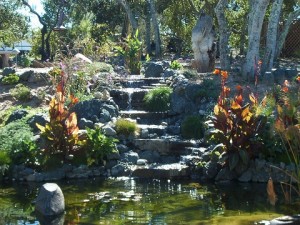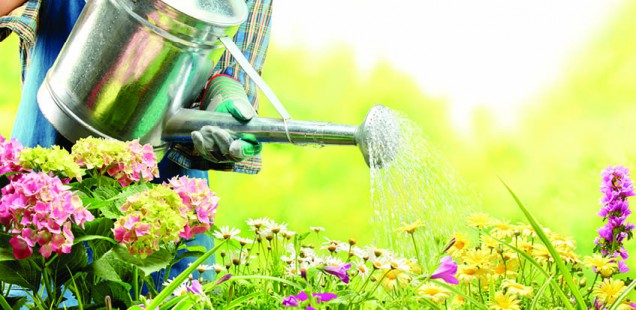Interior Trees that Works Best for your Home
The summer season brings hot weather. It’s the time when we appreciate the shade of a beautiful interior trees. Trees provide other benefits, too. They can block the wind, help clean the air, provide fruit and nuts and create a hospitable habitat for wildlife. Trees can also serve as a great place for the kids to play. If you want an interior trees in your home, do you know how to select the right tree—one that will live a long time?
If your yard doesn’t have interior trees at the moment, you may want to think about planting some. Studies show that trees and landscaping add value to your property. Even if you do not intend to sell your property, trees can provide years of enjoyment. If you have interior trees in your house, check to see that they are healthy. If they are near the end of their life or show signs of decline, you may want to plant new trees that will become established before the old trees are removed.
Benefits for Planting Trees
Have you wondered what you could do to reduce greenhouse gases and address global warming? Planting trees will help! One of the greenhouse gases causing the most concern is carbon dioxide. Plants take this gas out of the air and use it in photosynthesis. Carbon is stored in the wood and living tissues of trees. When leaves fall and are composted, carbon is added to the soil. This improves the soil for plant growth and stores more of the carbon in the form of soil organic matter. Carbon can be stored for hundreds of years in the trunks of trees or in the form of lumber, furniture, and other wood products. By planting trees in your yard, you can help reduce greenhouse gases.
A large shade tree planted on the southwest side of the house can provide cooling shade in the summer and help lower air conditioning costs. Once the leaves drop in the fall, the winter sun is free to warm your house on cold winter days. Evergreen trees can be planted to block cold winter winds and help reduce winter heating costs.
Trees also give shelter and food for a variety of wildlife. While installing bird feeders will help attract birds to your yard, providing them with nearby trees and shrubs to escape danger, build nests, and obtain food, will be even more effective. When picking out a tree, consider what value they may offer to the wildlife in your community.
Trees can offer years of enjoyment. Planting trees and watching them grow can be part of your family’s memories. Consider planting a tree to commemorate a milestone in your family’s life. While raking leaves may seem like a chore as you get older, jumping in piles of leaves can be a treat for children. Hanging a swing, building a tree house, or simply relaxing under the shade of a tree on a hot summer day can be a memorable experience.
Selecting the Right Interior Trees
When looking for that perfect interior trees for your home, pick one with good form. Most trees should have one main leader (trunk) and a balanced number of side branches. They should look healthy and free from insect damage–and show evidence of growth. Be sure to get your interior trees from a reputable nursery that has inspected and certified stock. Select a tree that is native to your area because it will have an easier time growing and prospering than a tree that is not used to the conditions of your area.
When buying interior trees it is really important to make sure that the tree will transplant well from the nursery to your designated area inside your home. There are many different ways to transport a tree and some may have different needs than others. Balled and bur lapped trees usually transplant well. The tree’s root system is contained within the ball of soil; the soil remains firm around the root system to minimize transplant shock. You do not want a tree that has been allowed to dry out. Make sure your tree’s root ball is kept moist prior to planting.
Container grown trees spend at least part of their life in a pot. These trees transplant well from early spring into fall. The root mass will come out of the pot intact if it is a container-grown tree. There should be plenty of feeder roots–those thin, hair-like roots–but not so many roots that the tree has become pot-bound. Make sure to check the roots for damage. Rodent damage is easy to spot—you will see evidence of chewing and, possibly, tunnels or holes. Avoid any tree with a foul odor coming from the root area because it is probably suffering from disease.
Bare root trees are usually extremely small plants. Most of these trees are best planted in winter if the ground is not frozen or in early spring before the leaves come out. The roots are exposed, so the trees must be stored in a humid, cool place, where the roots are kept covered with a moist material until planting time.
What are the Best Interior Trees?
There are a large variety of different accessories to look at when it comes to decorating your home, but one item that many people overlook is interior trees. These trees can really bring a room together, and it’s always nice to have a little bit of greenery in the interior of your home. Whether you’re looking for something to bring life into the office or you just want to have something to look at on a lazy Sunday in your own home, these trees are some of the best options to look at.
Schefflera Tree
Also known as the umbrella tree, the schefflera tree has large leaves that work when you are trying to create a tropical or island feel in your home. They do need a bit more light than most other options during the day, but it’s definitely worth it if you can make it work in your building. These trees can grow to be up to eight feet tall.
Dragon Tree
Many people are first drawn towards this tree because of its name, but you may have also heard of it referred to as the “Madagascar tree”. This is a great option when you want something that is easy to maintain because it does not require very much extra maintenance on your part. One of the most interesting aspects of this tree is that you can actually control the direction that the branches grow over time.
Rubber Tree
A third option when you are looking to add a tree to your home is the rubber tree. Most people like to keep this tree short and thin when they place it in the interior of their home, and the big, dark leaves can make it work in any room around the house. This is another tree that can grow to be up to eight feet tall if you don’t trim it on a regular basis.
Lemon Tree
Perhaps the most useful tree on this list, the lemon tree will be able to offer you beauty and fresh lemons. The aroma that comes from this tree is powerful enough to freshen your entire home while it is in full bloom, so you won’t have to worry about getting home air fresheners for a while. The usual routine with this tree is to have it in the patio during the summer and bring it back inside during the winter.
Interior trees add so much to the home landscape! They provide shade, clean air, habitat for wildlife, value to your property, and even memories. Knowing what to look for will help you select the right interior trees. A healthy tree will last a long time and provide many benefits. Happy planting!
Interested in more interior trees ideas? Contact us at 805-773-5395 or 











